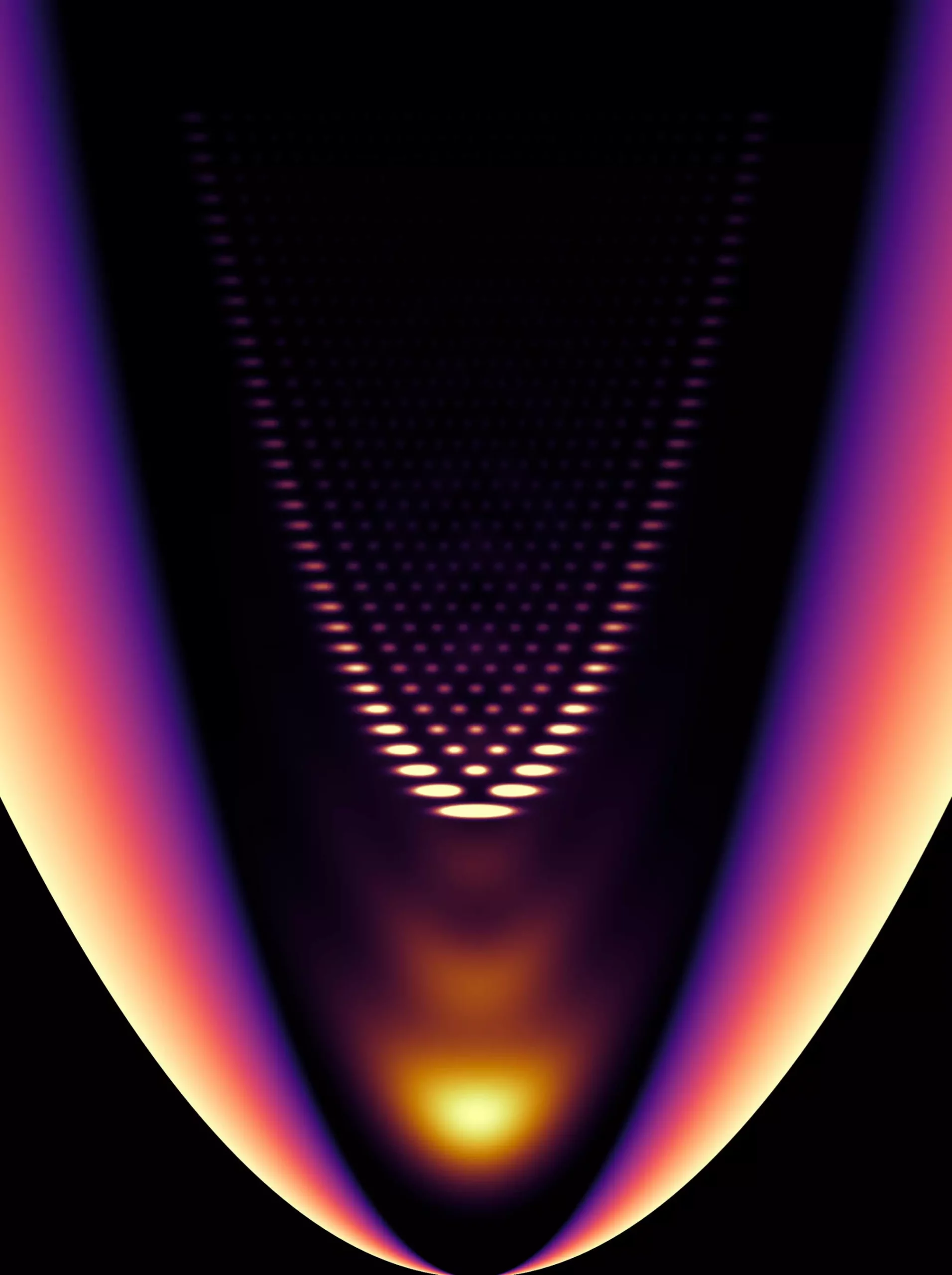Researchers at the University of Bonn, collaborating with the University of Kaiserslautern-Landau (RPTU), have ventured into an amazing domain of physics by creating a one-dimensional gas composed of photons. This innovative achievement offers a remarkable opportunity to examine theoretical predictions surrounding the transition into this extraordinary state of matter for the very first time. The findings of this groundbreaking study have been documented in the esteemed journal Nature Physics, illuminating the pathways through which quantum behaviors may be scrutinized and understood.
To comprehend the implications of this research, one might visualize a simple analogy involving a swimming pool. When attempting to fill a pool with water using a garden hose, the resulting jet of water initially increases the water level momentarily; however, the disturbance is quite minor as the liquid quickly disperses across the surface. Conversely, if water is directed into a narrow gutter, waves are generated as the constraints of the gutter direct the water flow along a singular pathway. The significance of this analogy lies in demonstrating how physical dimensions influence behavior: as the gutter narrows, the amplitude of the wave amplifies, illustrating a progression toward one-dimensional characteristics.
In a similar vein, the team of physicists sought to explore how light particles confined within a restricted space could mimic these dimensionality effects. They accomplished this by containing a dye solution within a small optical cavity and exciting the solution with a laser. The subsequent photons traveled back and forth, becoming increasingly confined until the photon gas eventually condensed. This condensation process highlights the fascinating interplay between light and intricate physical structures.
The researchers’ efforts were bolstered by a significant collaboration with Prof. Dr. Georg von Freymann’s group at the RPTU. Together, they enabled sophisticated control over the photon gas’s dimensionality by adapting a high-resolution structuring method to the reflective surfaces of the photon container, applying a transparent polymer to create microscale protrusions that act akin to the sides of a gutter for light.
The researchers observed that, akin to water reaching its freezing point at a defined temperature, two-dimensional gases undergo distinct phase transitions. However, one-dimensional photon gases experience an entirely different narrative. Dr. Vewinger explained that, unlike their two-dimensional counterparts—where thermal fluctuations are minor—one-dimensional gases exhibit significant thermal fluctuations that can disrupt order within the system. This leads to a phenomenon where the distinct phase transition observed in higher dimensions becomes increasingly nuanced, often described as being “smeared out.”
These unique characteristics of one-dimensional photon gases suggest that unlike conventional states of matter, they may not possess a well-defined condensation point. The behavior of such gases could be likened to a semi-frozen state of water; it remains in a physically manifest form yet has not reached a complete transition to solidification.
The breakthroughs achieved in this research have far-reaching implications, both academically and in potential applications within the field of quantum optics. By fine-tuning the tiny polymer structures that facilitate photon trapping, researchers can engage in more detailed exploration of the phenomena that arise during transitions between different dimensions.
While the project is currently rooted in fundamental research, the consequences of this work may lead to novel applications that leverage quantum effects for advanced technologies. For instance, enhanced photonic devices could arise through an improved understanding of the properties exhibited by one-dimensional quantum gases, potentially paving the way for future innovations.
The creation of a one-dimensional photon gas represents a pivotal advancement in our understanding of quantum mechanics and matter. By bridging theoretical predictions and experimental evidence, physicists have unveiled a new dimension of study, offering insights that might one day facilitate groundbreaking technological innovations. The work conducted by these researchers not only enriches the fundamental knowledge of quantum states but also inspires a paradigm shift that could open exciting pathways in the field of quantum technologies. As they continue to explore the intricate behaviors of light and matter, there is much yet to be discovered in this fascinating scientific landscape.


Leave a Reply